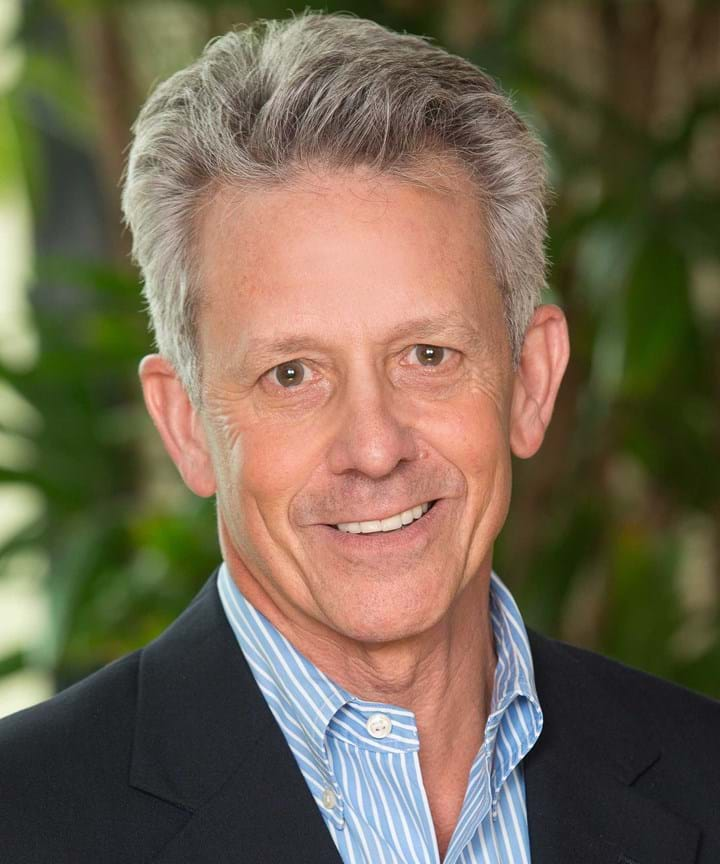
What’s been the story of your career Herb?
Herb Lipsman: I grew up in Iowa, US, and spent the first part of my career there as a professional tennis coach at various clubs in the mid-to-late 70s. At one of the clubs the manager was let go and the owner said: ‘The members like you, why don't you be the manager?’ That was the start of my club management career. I then had lengthy stints at premium clubs in Denver and Las Vegas, before I was recruited to The Houstonian Club in Houston, Texas, which at the time was one of the most prestigious jobs in the US club business. I was there for 13 years and I’ve spent the past five years managing multipurpose clubs across the VillaSport estate. I’m about to embark on my next adventure as VP and General Manager of Riverbend Club and The Reserve at Lake Travis in Austin, Texas. In between all this, I’ve spoken at conferences and conventions around the globe and written two books, including my newest offering: Caring (The Sequel).

How would you describe Caring (The Sequel) in an elevator pitch?
It’s a follow-up to the first book on Caring that I wrote 35-years-ago, which was a very straightforward guide for running a successful club operation, based on everything that I’d learned. This book – which benefits from a further 35-years of experience – is much more in-depth about how to deal more effectively with people – which is really at the heart of every major challenge we face in the fitness industry. So, it examines how you work with your team; how you work with all the different members and the challenges they present; how you deal with various types of owners and bosses; how you deal with your vendors. And because I've been at it for so long in so many different roles, I’ve encountered virtually every situation you can imagine. There are nuggets in the book for everyone, from the fitness newbie right through to the seasoned club owner.
What does ‘Caring’ mean to you?
‘Caring’ sincerely is central to all aspects of fitness and it’s the most important trait for getting ahead and being successful. This applies across all different constituencies. You have to genuinely care about how members are treated. You have to care about how your employees are treated and how they feel about the work they spend so much time doing. And you have to care about whether the owners are proud of the club, whether the reputation is strong, and if the financials stack up. And if you don't – if it's just a job where you're trying to earn your wage and bonus – it'll quickly show through. You have to care and it has to be genuine. Without that, you’ll struggle to achieve any sustainable success. With it, there’s no limit to how far you can go.
What are the standout lessons in Caring (The Sequel) for anyone hoping to forge a career in fitness?
You have to be genuine. There's not a right or wrong way to be, you just have to be yourself. Take sports, for example – all different kinds of coaches win the Championship, with diverse personalities and approaches, but they all have a strong sense of who they are and what they stand for.
The principal way you demonstrate who you are is through your interactions with people and you have to love people if you want to be successful in this business. The key is to understand that each colleague and member has a different paradigm for how they see the world. It’s not so much understanding demographics, but rather psychographics – what their interests are and what really connects them to their club. Every club has a diverse network of tribes and they all have different needs and desires, so you need to demonstrate great levels of empathy to be able to lean in and understand what they require from you at any given moment.

There aren’t any shortcuts here, you have to really put the work in and know your constituents. In the book I talk a lot about the importance of MBWA (Managing By Wandering Around). In a world where we’re drowning in metrics and data, it’s very easy to find yourself chained to a computer from dawn till dusk, but if you’re a leader, you have to be visible and ensure you’re front and center in the club during peak times – engaging with people and showing that you care about them.
Your career has spanned the entire ‘coming of age’ of the fitness sector – what are the biggest changes you’ve seen over the last 45 years?
The obvious development has been the role of technology in our fitness journey and the emergence of the quantified self, with people now tracking virtually everything they do. This has touched every element of the club, from the equipment, the management processes, to the fact members can now work out with us without even being in the club. But the one thing that hasn’t changed at all in 45 years is that a member’s attraction to the club is driven by a strong desire to be connected to other people – and this has only intensified since the start of the pandemic. When you talk to members, you realize how big an impact that connection has on their mental wellbeing, and if you can help someone make lots of friends at your club, they’re very unlikely to leave you.
How do you help people to make these connections in the club?
Group exercise is the bedrock of this. In the clubs I’ve managed over the years, group exercise has been the number one driver of membership sales and a fantastic way to forge connections among your current members. Not only that, but it’s a great way to drive member referrals, particularly via social media. Let’s face it, people don’t go on Facebook or Instagram to talk about their favorite treadmill or resistance machine, they go on there to rave about the killer class they’ve just done with an awesome Instructor and to share their sweaty victory selfie. It’s a great driver of awareness and exposure for your club and the key to maintaining a healthy pipeline of prospects.
And what makes for a great Instructor?
All of the things that make for a great operator in terms of Caring and genuinely loving people, but in addition to that I’d say enthusiasm is a standout trait. I’ve worked with thousands of Instructors over the years, but the stars that I still think of now had this sheer magnetism whereby whichever room they’re in is where people are having the best time. Genuine enthusiasm is vital, as is the ability to care about their participants and the club more than they care about themselves. It’s great to have a spark and lots of confidence, but you don’t want this to bleed over into becoming a bit of a diva. Making sure that Instructors are part of the fabric of the club and made to feel part of a team is key to creating a collaborative environment where everyone can shine.

What are the biggest challenges you see operators grappling with today that you’d like to help them with?
One of the biggest issues right now is a macroeconomic trend and that’s the global labor shortage. It’s getting increasingly hard for clubs to find good people – particularly Instructors and it’s squeezing margins as wages edge higher. Given that the cost of labor is going to be higher whoever you choose to hire, I see this as a big opportunity for clubs to reinvent their recruitment strategy and set out to get the very best people they can within their given market and segment. This may cost a little more in the short-term, but in a people-centric industry, having great staff and rockstar Instructors is going to set your club apart from the competition. Your people are one advantage that your rivals can’t copy, so it really pays to get the best people.
Wages are one thing, but creating a great culture within your organization – one of teamwork, treating everyone with dignity and respect, inspiring high performance – costs nothing and can be a significant draw-card for attracting top talent. Money is an extrinsic motivator and many great people I’ve worked with over the years have been willing to earn slightly less if it means working in a passionate and fulfilling environment where they’re empowered to flourish.
And what are the biggest opportunities for clubs as we emerge from the pandemic?
It’s got to be reaching the 80% of the population who don’t currently engage with gyms. The pandemic has brought our health into sharp focus and people are beginning to realize that it’s their own responsibility to stay healthy, so now it’s up to us to break out of our small segment and make the quantum leap into mainstream adoption. We’ve been talking about this for years, so it’s going to take a completely fresh and innovative approach to truly make headway. This means finding creative ways to get people through the door that don’t necessarily pertain to fitness in the first instance. Whether that’s free seminars for the public on how to lead a healthier life, eat and sleep better, or personal consultations, our teams have a wealth of knowledge that we can leverage to attract fresh faces through our doors. Sometimes you just need to give a little something free up front to kickstart the conversation. When I was a tennis coach, I always used to offer free introductory sessions to the key influencers at each new club I served and after three months I would have more clients than I knew what to do with. ‘Speculate to accumulate’ is an underrated strategy!
I also feel that focusing on the mental and emotional wellbeing of members and prospective members will be an integral part of the “Secret Sauce” that will separate the most successful club operators of the next decade and beyond.
Herb Lipsman Bio
Herb Lipsman has spent more than four decades managing upscale health clubs, country clubs and resort properties throughout the United States. He served for 13 of those years (1993 – 2006) with The Redstone Companies in Houston, first as general manager of The Houstonian Club and ultimately as Senior Vice President of Development for all of the company’s club and hospitality properties.
Lipsman also served as a design and development consultant to River Oaks Country Club, Lakeside Country Club and Houston Country Club when they expanded and upgraded their on-site fitness centers. He was tapped to be the Chief Operating Officer for The Clubs at Houston Oaks from 2010 -2013 and as General Manager for Golf Club of Houston, former site of the PGA Tour’s Shell Houston Open, from 2013 - 2016.
Most recently, Lipsman served as General Manager for VillaSport Athletic Club and Spa at their location in The Woodlands, Texas. Lipsman is now beginning the newest chapter in his journey as Vice President/General Manager for Riverbend Club and The Reserve (resort) at Lake Travis in Austin, Texas.
Lipsman has also just completed and published his new book on club and hospitality management, entitled Caring (The Sequel): Valuable Insights into Effective Club and Hospitality Management to high acclaim by industry leaders.
